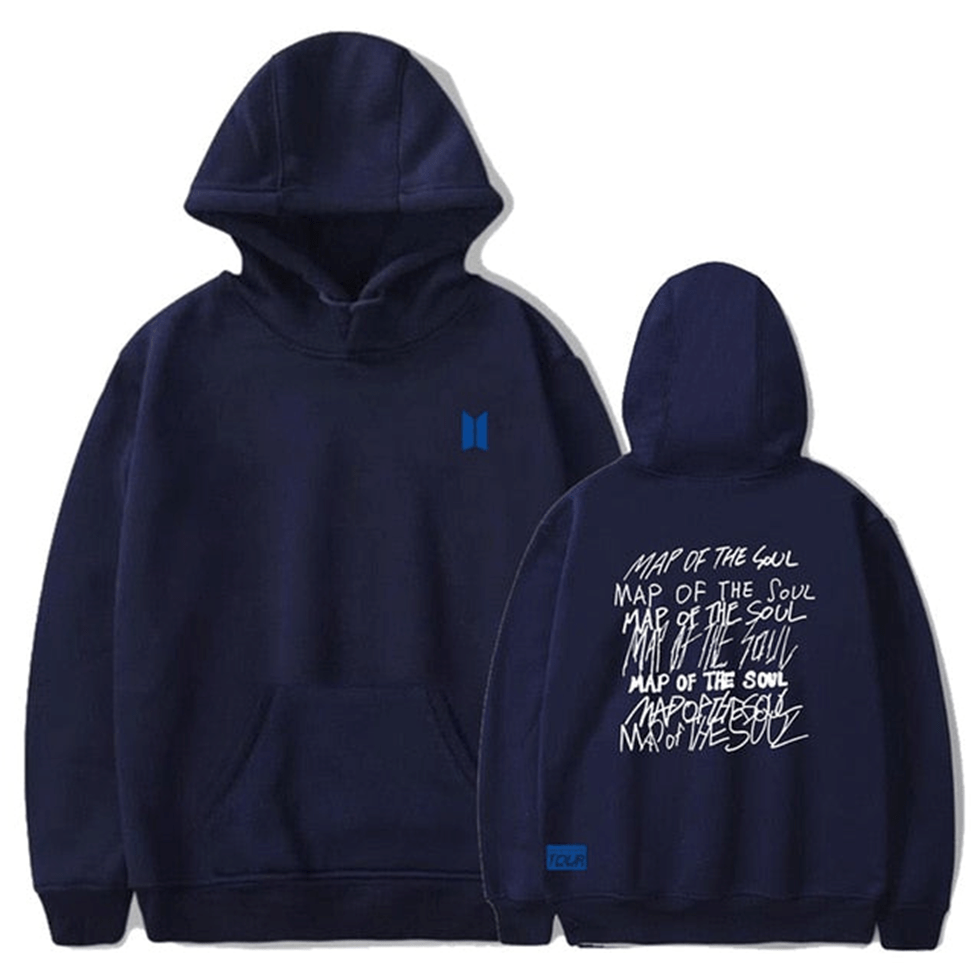Fashion
Creating your Own Design for Jacket or Hoodie

Winter is upon us, and with it comes the need for jackets and hoodies.
You could rock a plain colored jacket or hoodie or spice it up with a custom printed image or message.
Jacket printing allows you to stand out from the crowd, spread a message, or show unity even in the coldest of days.
While there is no shortage of preprinted custom jackets and hoodies on the market, designing and printing a jacket or hoodie yourself comes with many benefits.
One of the top benefits is knowing that your jacket or hoodie precisely spreads the message you want it to.
Read on to learn how to design a custom jacket or hoodie, what benefits designing your own can have, and how to find the best place for your hoodie printing services needs.
Why should I create my own design?
In our modern world there are many ways to express yourself.
There are tons of ways that we let others know how we feel, what we believe, who we are, and what we are thinking.
One of the best ways is by wearing custom printed apparel.
Sometimes we can find a great match for the message we want to send out into the world online or in a store that has been preprinted and mass-produced.
Creating your own design allows you to be more unique, knowing that you are wearing a one-of-a-kind design.
It also allows you to let the world see exactly how you feel or think and spreads your message in a more direct and controlled way.
While custom printed tshirts are the norm jackets and hoodies are the best option during the winter time, especially if you are in an area that is prone to cold weather.
Custom jackets and hoodies ensure that the cold weather does not mean your custom design is covered up due to the need for an extra top layer.
How to create a custom design
When creating a design for a custom printed hoodie or jacket the first thing you have to do is brainstorm what you want it to look like and the message you want it to convey.
If you are designing a jacket or hoodie for fun to express yourself, for instance, you may want to think about images and sayings that project you and your sense of humor.
You can also use a custom printed jacket or hoodie to create a team atmosphere or bring awareness.
Once you’ve decided how you want your jacket or hoodie to look, search the internet for a design to add or create your own with the help of programs like Canva or Adobe.
Play around with fonts, colors, and positions on the jacket or hoodie until you find the perfect look.
Determine the best printing method for your design.
Finding the best printing company
Once you have created your design, figured out exactly how you want your jacket or hoodie to look, and what printing method you want, do your research to find the best jacket printing company.
Ask family, friends, and neighbors who they use for their hoodie printing services.
Search for printing companies online.
Look at their finished product and customer reviews to determine quality.
Shop around to find the best price.
Talk to them about the design, printing method, and amount of hoodies or jackets you want.
If you are needing 25 or more at a time, see if they have a bulk order discount.
For online orders, check the shipping costs and details.
Ensure that the company has the proper licenses, tools, equipment, experience, and knowledge to help you.
Once you receive your custom printed jacket or hoodie, you are sure to have a uniquely designed piece of apparel that showcases your thoughts, feelings, and message the exact way you want it conveyed.
Fashion
Dark Skin Men Fashion: A Complete Style Guide for Every Occasion

Introduction
Fashion is for everyone, and dark skin men have a unique charm that can be highlighted with the right clothing choices. From casual outings to formal events, selecting the perfect colors, patterns, and textures can make a significant difference. This guide dives deep into practical fashion tips, style rules, and personal insights tailored specifically for dark skin men, helping you feel confident, stylish, and effortlessly elegant.
Whether you’re refreshing your wardrobe or preparing for an important occasion, understanding the relationship between skin tone and clothing choices is key. This article also covers footwear, accessories, and even grooming tips to ensure your look is polished from head to toe. By the end, you’ll have actionable advice that you can use immediately, whether shopping online or in-store.
Understanding the Importance of Skin Tone in Fashion
Your skin tone plays a vital role in determining which colors complement you best. Dark skin men have a natural advantage because many colors stand out beautifully against their skin. Shades like royal blue, white, pastel pinks, and even vibrant yellows create a striking contrast.
Avoid colors that may blend too closely with your skin tone, such as browns and deep greens, unless paired carefully with contrasting layers or accessories. Remember, fashion is about confidence. When you choose clothes that highlight your skin tone, it boosts not just your style, but also your self-esteem.
Choosing the Right Colors for Dark Skin Men
Color choice can make or break an outfit. Dark skin men should experiment with jewel tones like emerald green, sapphire blue, and rich burgundy. These colors pop beautifully and draw attention in a positive way.
Pastels like mint green, powder blue, and lavender also work surprisingly well, especially during spring or summer. Neutral tones such as grey, white, and black are timeless and versatile, forming the base for most outfits. Personal experience suggests that contrasting shades create the most visually appealing look.
Casual Outfits That Work Wonders
Casual wear is where dark skin men can truly express personality. T-shirts in bold colors paired with jeans or chinos make a simple yet effective statement. Polo shirts in contrasting shades also elevate casual looks effortlessly.
Sneakers, loafers, or casual boots complete the outfit, depending on your style preference. Accessorizing with a stylish watch or bracelets adds a personal touch. Remember, even casual outfits should feel intentional, showing that you’ve put thought into your style rather than just throwing on clothes.
Formal Wear Tips for Dark Skin Men
Formal attire is all about sophistication and detail. Dark skin men should consider tailored suits in navy, charcoal, or deep burgundy. White shirts always look crisp and professional, while light-colored ties, such as soft pink or silver, create an elegant contrast.
Experimenting with patterned suits like pinstripes or subtle checks can add character without overwhelming your look. Shoes should be polished and classic think black or brown leather. Confidence in carrying the outfit makes the final statement stronger than the suit itself.
Street Style: Combining Comfort and Trend
Streetwear is where creativity shines. Dark skin men can rock hoodies, oversized jackets, joggers, and sneakers while staying on trend. Earth tones combined with vibrant sneakers often create a perfect balance.
Layering is key for street style. A colorful jacket over a neutral hoodie can make the outfit pop. Accessories like caps, beanies, or stylish sunglasses add an urban edge. The goal is comfort without sacrificing style, giving you a naturally confident vibe.
Patterns and Prints That Flatter
Patterns can be tricky but powerful. Dark skin men shine in bold prints, from floral to geometric designs. Vertical stripes elongate the body, while subtle patterns on shirts or jackets add dimension.
Avoid overly busy patterns for formal occasions, sticking instead to minimal prints or accents. Personal insight: pairing a patterned shirt with solid trousers balances the outfit and ensures the print stands out elegantly without clashing.
Footwear Choices for Every Occasion
Shoes are crucial in completing your look. Casual sneakers work for everyday wear, while loafers or monk straps elevate semi-formal outfits. For formal events, classic black or brown dress shoes are perfect.
Pay attention to shoe color. Brown shoes complement navy or earth-toned outfits, while black shoes work well with darker suits. Investing in quality footwear not only improves appearance but also boosts confidence and comfort.
Accessories That Enhance Style
Accessories are the subtle details that make a big impact. Watches, bracelets, and belts should complement your outfit, not overpower it. Dark skin men can pull off both gold and silver jewelry depending on the color of their outfit and personal preference.
Hats, scarves, and sunglasses can enhance both style and personality. When choosing accessories, consider proportion and balance. Too many can overwhelm your outfit, while the right pieces draw attention to your style thoughtfully.
Grooming and Skin Care for a Polished Look
Fashion isn’t just about clothes. Dark skin men should also prioritize grooming. A clean haircut, well-maintained facial hair, and skincare routines enhance overall appearance. Moisturizers and sunscreens help maintain a healthy glow, ensuring your skin complements your wardrobe.
Even the best outfit can be overshadowed by poor grooming. Personal experience shows that consistent skincare routines not only improve skin but also increase confidence, making any fashion choice look intentional and polished.
Seasonal Fashion Tips
Seasons affect your wardrobe choices. Summers are ideal for light fabrics like cotton and linen, with bright colors and pastels standing out beautifully. Winters allow for layering with jackets, coats, and darker tones that highlight your skin’s depth.
Layering also adds versatility. For example, wearing a neutral hoodie under a bold jacket balances both comfort and style. Dark skin men can experiment with seasonal trends without losing their personal style identity.
Building a Capsule Wardrobe
A capsule wardrobe focuses on versatility and quality. Dark skin men should prioritize essentials like white and black shirts, navy suits, well-fitted jeans, and quality shoes. These pieces mix and match easily, reducing wardrobe stress while maintaining style consistency.
Investing in fewer, high-quality items often creates a more polished appearance than buying large quantities of cheap clothing. Personal advice: always choose comfort and fit over brand labels nothing looks better than clothes that feel right on your body.
Common Mistakes to Avoid
Avoiding fashion mistakes can significantly improve your style. Oversized or ill-fitted clothing, clashing colors, and ignoring personal grooming are common errors. Dark skin men fashion should also be cautious with overly muted tones, which may make outfits look dull.
Another tip: don’t follow trends blindly. Fashion should reflect your personality and confidence. Wearing clothes that align with your body type, skin tone, and comfort level always makes a stronger impact than chasing temporary trends.
FAQs
1. Which colors are best for dark skin men?
Jewel tones, pastels, and neutrals like navy, white, and grey highlight dark skin beautifully.
2. Can dark skin men wear bright colors?
Absolutely! Bright colors like yellow, pink, or turquoise create striking contrast and draw attention positively.
3. What suits work best for formal events?
Navy, charcoal, and burgundy suits paired with white or light-colored shirts are ideal for elegance.
4. Are patterns suitable for dark skin men?
Yes, bold prints, vertical stripes, and minimal geometric patterns enhance style without overwhelming.
5. How important are accessories?
Accessories are crucial. Watches, bracelets, belts, and sunglasses elevate outfits when balanced properly.
6. How can I maintain a polished look daily?
Grooming, skincare, and well-fitted clothes ensure your appearance is always stylish and confident.
Conclusion
Fashion for dark skin men is about embracing colors, patterns, and textures that enhance natural beauty. Confidence, grooming, and thoughtful outfit choices play a key role in creating a lasting impression. By understanding your skin tone, experimenting with versatile clothing, and using accessories wisely, you can elevate your style effortlessly.
Start small by incorporating a few key colors, upgrading your shoes, or trying patterned shirts. Over time, you’ll develop a wardrobe that reflects both personality and elegance. Fashion isn’t just clothing it’s a way to express yourself. Dark skin men have a unique canvas; it’s time to make it shine.
Fashion
How to Build a Versatile Lingerie Wardrobe That Complements Every Outfit

Introduction
A well-curated lingerie wardrobe is just as essential as any other part of your wardrobe. From providing comfort and support to enhancing your outfits, the right lingerie can make a significant difference in how you look and feel. Whether you’re dressing for work, a night out, or lounging at home, having a selection of versatile, high-quality lingerie ensures that you’re prepared for any occasion. In this guide, we’ll explore how to build a lingerie collection that complements every outfit, with a focus on different styles, fabrics, and key pieces every woman should have. We’ll also dive into Felina loungewear and how it fits into your ultimate lingerie wardrobe.
Building a versatile lingerie wardrobe is an essential part of maintaining both comfort and style. By selecting a variety of bras, panties, shapewear, loungewear, and special occasion pieces, you can ensure that your lingerie collection meets your needs for every outfit and every occasion. Felina loungewear offers a range of beautiful, comfortable pieces that will complement your wardrobe perfectly, from everyday essentials to luxurious pieces for special events. With the right lingerie, you’ll feel confident, comfortable, and stylish all day long, no matter what the day brings.
1. Understanding the Different Types of Lingerie
Before you start building your lingerie wardrobe, it’s important to understand the various types of lingerie available. Some of the most common pieces include bras, panties, shapewear, corsets, and camisoles. Each piece serves a unique purpose, whether it’s providing support, shaping the body, or offering comfort. Understanding the role of each item allows you to choose the right lingerie for specific outfits, ensuring you’re both comfortable and stylish. Felina loungewear offers a great selection of comfortable, versatile lingerie that can fit seamlessly into any wardrobe.
2. Choosing the Right Bra for Every Occasion
One of the most important aspects of building a lingerie wardrobe is having a variety of bras to accommodate different outfits. From push-up bras for adding a bit of extra lift to seamless bras for a smooth look under clothing, there are numerous options to consider. For daily wear, a comfortable t-shirt bra in neutral colors is essential, while for special occasions, a more intricate lace or strapless bra might be required. Make sure to include Felina loungewear pieces in your collection for added comfort on those laid-back days when you need support without sacrificing style.
3. Essential Panty Styles to Complement Your Lingerie Wardrobe
Panties are an essential part of any lingerie wardrobe, and there are several different styles to choose from. Briefs are perfect for comfort, while thongs provide a seamless look under tight clothing. Bikini-style panties offer a happy medium between coverage and comfort, and high-waisted styles can smooth the silhouette. Building a collection of panties in various styles and fabrics, such as cotton for everyday wear or lace for something a bit more special, ensures that you’ll always have the perfect pair to match your outfit.
4. The Power of Shapewear: Smooth and Supportive
Shapewear can be a game-changer when it comes to creating a flattering silhouette. From smoothing the waist to lifting the rear, shapewear helps to create a sleek look under form-fitting outfits. Whether it’s a full-body shaper or a high-waisted brief, shapewear is a must-have for those special occasions where you want to feel confident and put-together. Choose shapewear that offers both support and comfort without being restrictive, and make sure to incorporate it into your lingerie wardrobe.
5. Comfort Meets Style: Loungewear for Relaxation
Loungewear is the perfect combination of comfort and style, and it’s an important addition to any lingerie wardrobe. These pieces are designed for relaxation, offering softness and ease while still being stylish enough to feel put together. Felina loungewear provides a range of comfortable yet fashionable pieces that you can wear while lounging at home, or even out for errands. Soft fabrics, relaxed fits, and cozy designs make loungewear a wardrobe essential for moments when you want to feel comfortable and chic without compromising on style.
6. Finding the Right Fabric for Comfort and Durability
When building a lingerie wardrobe, the fabric of each piece plays a significant role in both comfort and durability. Cotton is soft and breathable, making it a great option for everyday wear, while silk and satin offer a luxurious feel perfect for special occasions. Lace adds a touch of elegance, but may not provide the same level of comfort as cotton or microfiber. When selecting lingerie, consider both comfort and longevity, and be sure to choose pieces made from high-quality fabrics that will last. Felina loungewear offers a variety of fabrics that combine luxury and comfort, ensuring you feel relaxed and stylish.
7. Color and Style: Building a Versatile Collection
Building a versatile lingerie wardrobe means selecting pieces in a variety of colors and styles. Neutral shades such as black, white, and nude are great for everyday wear, as they blend seamlessly under most outfits. However, don’t be afraid to add some color and flair to your collection with vibrant shades and patterns for special occasions. Lingerie is an expression of your personality, so make sure to select styles that make you feel confident and beautiful. Felina loungewear offers a range of colors and styles that cater to both practicality and style, ensuring you have something for every mood and occasion.
8. Layering Your Lingerie for Versatile Looks
Layering lingerie can elevate your style and add versatility to your wardrobe. A sheer camisole over a bra can add a touch of elegance under a blazer, while a delicate lace slip can be paired with your favorite dress for a subtle hint of luxury. Layering allows you to mix and match different lingerie pieces, making it easier to create outfits that reflect your personal style. Consider investing in pieces that can be layered, such as sheer bras, lace bralettes, or silk robes, for an added touch of sophistication and style.
9. Special Occasion Lingerie: Luxurious Pieces for Every Event
There are times when you need lingerie that adds a touch of glamour and luxury, whether it’s for a special evening out or an intimate celebration. Special occasion lingerie, such as lace bras, silk slips, and satin robes, are designed to make you feel elegant and sensual. These pieces not only enhance your outfit but also contribute to your confidence and mood. When shopping for special occasion lingerie, choose pieces that reflect your style while offering comfort and support.
10. Caring for Your Lingerie: Maintenance Tips for Longevity
To ensure your lingerie lasts as long as possible, proper care and maintenance are essential. Always follow the care instructions on the label, and consider hand washing delicate items or using a mesh bag for machine washing. Hang dry your bras to preserve their shape and elasticity, and avoid using harsh detergents that could damage the fabric. Proper storage also helps extend the life of your lingerie. Invest in a good lingerie bag for storage and keep your pieces organized and in great condition.
Fashion
The Undercover 98AW Leaf Cross Pendant: A Fashion Icon’s Legacy

Introduction
In the late 1990s, Japanese fashion was undergoing a radical transformation. While mainstream brands focused on commercial appeal, a young designer named Jun Takahashi was crafting something entirely different with his label Undercover. Among his most celebrated creations stands the 98AW Leaf Cross Pendant a piece that would become one of the most coveted accessories in streetwear history.
This pendant represents more than just jewelry; it embodies the rebellious spirit and artistic vision that defined Undercover’s early years. The 1998 Autumn/Winter “Leaf” collection marked a pivotal moment for the brand, introducing design elements that would influence fashion culture for decades to come.
Understanding the significance of this pendant requires exploring the creative mind behind it, the collection that birthed it, and the lasting impact it continues to have on fashion enthusiasts worldwide. From its intricate design details to its symbolic meaning, the Undercover 98AW Leaf Cross Pendant remains a testament to innovative design and cultural relevance.
Jun Takahashi’s Revolutionary Vision
Jun Takahashi founded Undercover in 1990 while still a student at Bunka Fashion College. His approach to fashion challenged conventional boundaries, blending punk aesthetics with high fashion craftsmanship. Takahashi’s background in music and graphic design heavily influenced his work, creating garments and accessories that felt more like wearable art than traditional fashion pieces.
The designer’s philosophy centered on storytelling through clothing. Each collection told a narrative, often drawing from literature, music, and counterculture movements. This approach set Undercover apart from other Japanese designers who were gaining international recognition during the same period.
By 1998, Takahashi had established Undercover as a brand that pushed creative boundaries. His work resonated with a growing audience who appreciated fashion that conveyed deeper meaning beyond surface aesthetics. The “Leaf” collection would prove to be one of his most influential statements.
The 98AW “Leaf” Collection: A Cultural Moment
The 1998 Autumn/Winter collection, dubbed “Leaf,” represented Undercover at its most poetic. The collection explored themes of nature, decay, and renewal concepts that would manifest in both the clothing silhouettes and accompanying accessories. Takahashi presented garments that appeared weathered and organic, as if shaped by natural forces rather than traditional tailoring.
This collection marked a turning point for Japanese streetwear. While many brands focused on bold graphics and logos, Undercover embraced subtlety and symbolism. The “Leaf” theme appeared throughout the collection in various forms, from embroidered details on jackets to the intricate metalwork of the now-famous cross pendant.
The timing of this collection proved perfect. Fashion was moving toward more experimental territory, and consumers were hungry for pieces that offered both aesthetic appeal and conceptual depth. The “Leaf” collection delivered both, creating a template that many brands would later attempt to replicate.
Design and Symbolism of the Cross Pendant
The Undercover 98AW Leaf Cross Pendant stands out for its intricate design that merges religious iconography with natural motifs. The piece features a traditional cross silhouette, but Takahashi’s interpretation transforms it into something entirely unique. Delicate leaf patterns wind around the cross’s surface, creating texture and visual interest that changes depending on the viewing angle.
The pendant’s symbolism operates on multiple levels. The cross represents spirituality and transcendence, while the leaf motifs suggest cycles of life, death, and rebirth. This duality reflects Takahashi’s ability to layer meaning into seemingly simple designs. The piece speaks to themes of faith, nature, and the passage of time—concepts that resonate across cultures and belief systems.
Size plays a crucial role in the pendant’s impact. Rather than creating an oversized statement piece, Takahashi chose proportions that feel intimate and personal. When worn, the pendant sits close to the heart, emphasizing its spiritual and emotional significance. This design choice reflects the designer’s understanding of how accessories function as personal talismans.
The pendant’s versatility has contributed to its enduring appeal. It complements both casual streetwear and more formal attire, making it accessible to various style preferences. This adaptability ensures the piece remains relevant regardless of changing fashion trends.
Materials and Craftsmanship Excellence
Undercover’s commitment to quality becomes evident in the pendant’s construction. The piece typically features sterling silver, chosen for its durability and ability to develop a patina over time. This material choice aligns with the collection’s themes of aging and natural transformation the pendant literally evolves with wear.
The manufacturing process involves careful attention to detail rarely seen in fashion accessories of that era. Each leaf pattern is meticulously crafted, with subtle variations that make every piece unique. The pendant’s weight feels substantial without being cumbersome, striking a balance that speaks to thoughtful engineering.
Surface treatments vary across different production runs, with some pieces featuring oxidized finishes that enhance the leaf details’ visibility. These variations add to the pendant’s collectible nature, as enthusiasts seek out specific finishes or production periods.
The accompanying chain, when included, maintains the same quality standards. Undercover selected chain styles that complement the pendant’s proportions without overwhelming its delicate details. This holistic approach to design ensures the complete piece functions as a cohesive whole.
Cultural Impact and Fashion Legacy
The influence of the Undercover 98AW Leaf Cross Pendant extends far beyond its original release. The piece helped establish religious and spiritual iconography as legitimate elements in high-fashion streetwear. Many contemporary brands now incorporate similar symbolic elements, owing a debt to Takahashi’s pioneering work.
Fashion collectors recognize the pendant as a grail piece—an item that defines serious collecting in the Undercover universe. Its relatively limited production numbers have contributed to its mystique and desirability. The pendant frequently appears in museum exhibitions focusing on Japanese fashion’s global influence.
The piece has also influenced jewelry design beyond fashion circles. Independent artisans often create pieces inspired by its aesthetic, though none capture the original’s specific cultural context and craftsmanship quality. This broader influence speaks to the pendant’s success as a design object that transcends its original fashion context.
Social media has amplified the pendant’s cultural significance. Fashion enthusiasts share images of authentic pieces, creating a visual database that helps preserve its legacy. These online communities also facilitate knowledge sharing about identification, care, and styling.
Authentication and Care Guidelines
Identifying authentic Undercover 98AW Leaf Cross Pendants requires knowledge of specific details that counterfeiters often miss. Authentic pieces feature precise hallmarks, typically located on the pendant’s reverse side. The quality of the leaf detailing serves as another authentication method genuine pieces show crisp, well-defined patterns that cheap reproductions cannot replicate.
Weight provides another authentication clue. Authentic pendants have substantial heft due to their sterling silver construction, while fakes often feel noticeably lighter. The chain attachment points also show specific construction methods that vary from reproduction pieces.
Proper care ensures the pendant maintains its appearance over time. Sterling silver requires periodic cleaning to prevent tarnishing, though some owners prefer the natural patina that develops with age. Gentle polishing cloths work best for maintenance, avoiding harsh chemicals that might damage the surface details.
Storage considerations include keeping the pendant in a dry environment, preferably in individual soft pouches that prevent scratching. Chain care requires similar attention, with periodic inspection for worn links that might compromise security.
Professional restoration services exist for pieces showing significant wear, though many collectors prefer to maintain original patina that tells the story of the pendant’s journey through time.
Frequently Asked Questions
How can I tell if my Undercover 98AW Leaf Cross Pendant is authentic?
Look for precise hallmarks on the reverse side, substantial weight from sterling silver construction, and crisp leaf detailing. Authentic pieces have specific construction methods at chain attachment points that reproductions often miss.
What’s the typical price range for an authentic pendant?
Prices vary based on condition and rarity, but expect to pay premium prices for authentic pieces. Market values fluctuate based on fashion trends and collector demand.
Should I clean my vintage pendant or leave the patina?
This depends on personal preference. Some collectors appreciate natural aging, while others prefer restored appearance. Gentle cleaning won’t damage authentic pieces, but harsh chemicals should be avoided.
Are there different versions of the pendant from the 98AW collection?
Production variations exist, including different surface treatments and finishes. These variations add to collectible interest but don’t necessarily affect authenticity.
How should I store my pendant to preserve its condition?
Keep it in a dry environment, preferably in individual soft pouches. Avoid exposure to harsh chemicals and inspect chains periodically for wear.
A Lasting Symbol of Creative Vision
The Undercover 98AW Leaf Cross Pendant represents more than a fashion accessory it embodies a moment when creative vision intersected with cultural readiness for something new. Jun Takahashi’s ability to infuse deep meaning into beautiful objects created a piece that continues to resonate with fashion enthusiasts decades after its original release.
This pendant’s enduring appeal lies in its perfect balance of aesthetic beauty and conceptual depth. While fashion trends come and go, pieces that operate on multiple levels of meaning maintain their relevance across generations. The careful craftsmanship ensures physical longevity, while the symbolic richness provides emotional connection that transcends temporary style preferences.
For collectors and fashion enthusiasts, the pendant serves as a reminder of fashion’s potential to create objects of lasting cultural significance. It stands as proof that thoughtful design, quality construction, and meaningful symbolism can create pieces that become more valuable over time not just financially, but as cultural artifacts that tell the story of creative innovation in fashion history.
-

 Technology3 years ago
Technology3 years agoIs Camegle Legit Or A Scam?
-

 Travel3 years ago
Travel3 years agoNEW ZEALAND VISA FOR ISRAELI AND NORWEGIAN CITIZENS
-

 Uncategorized3 years ago
Uncategorized3 years agoAMERICAN VISA FOR NORWEGIAN AND JAPANESE CITIZENS
-

 Technology3 years ago
Technology3 years agoRNDcoin: Korea’s first blockchain project and a world-class cryptocurrency
-

 Fashion1 year ago
Fashion1 year agoGoda Perfume Reviews: Is It Worth Your Investment?
-

 Health3 years ago
Health3 years agoHealth Benefits Of Watermelon
-

 Home Improvement8 months ago
Home Improvement8 months agoArtificial Grass Designs: Perfect Solutions for Urban Backyards
-

 Fashion3 years ago
Fashion3 years agoBest Essentials Hoodies For Cold Weather














